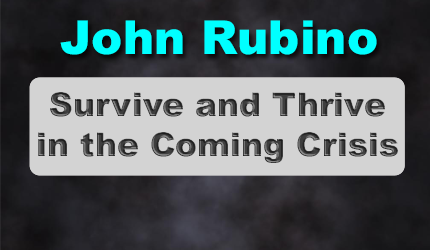September 4, 2023 | Your Bug-Out Bag Needs a Grab-and-Go Binder

The warning comes in the middle of the night: There’s a fire (or hurricane or flood or riot) headed your way. You get dressed, grab your bug-out bag, hop in the car, and head to the designated safe spot to wait out the trouble. Well done.
But then your significant other says “What about the kids’ birth certificates and our insurance policies?” You say, no problem, they’re in that file in the big closet…oh.”
That’s right. If your house is going to burn, flood, or be looted, you’re safe, which is the most important thing. But you’ll have a helluva time recreating the documents that define your place in the world if the originals are lost.
The Epoch Times recently addressed this in a long article that includes step-by-step instructions for closing this gap in your prepping. Here’s an excerpt:
The Ultimate Guide to Creating an Emergency Grab-and-Go Binder
When it comes to a worst-case scenario, your best friend will be your insurance agent or a reputable plumber or roofing contractor, not a bug-out bag or freeze-dried food. Right in the middle of Winter Storm Uri when the Texas power grid failed, a single weakened pipe in our attic burst, sending hundreds of gallons of water through our house. You can bet that the first phone call we made was to our insurance company.
In a scenario such as this one, however, when adrenaline is pumping and our brains can’t decide if we should flee, freeze, or fight, the last thing you’ll want to do is race through the house looking for insurance policies and things such as medical records, birth certificates, and bank statements.
Instead, take a few hours over the next couple of weeks and create a Grab-and-Go Binder that will contain all of your most vital documents. It will contain your most critical information for any emergency.
Unless you’re already extraordinarily organized, chances are your insurance documents and financial records are scattered around the house. Some may exist only as digital files, while paper copies could be in a filing cabinet or in a pile of unopened mail.
Here’s how to get started on that project.
Supplies You’ll Need
This project is simple and requires only a few supplies other than the documents themselves.
You’ll need a three-ring binder; the 2-inch size will likely provide plenty of room without being too bulky. Then, you’ll need a supply of plastic page protectors, and binder dividers will help keep your documents organized. Pocket dividers can hold small things such as membership cards, receipts, and photos, and a three-ring plastic pouch can hold pens, a USB flash drive, and other small, relevant items.
Back-to-school season is ideal for buying these supplies at a discount.
Get Started on the Project
The most time-consuming part of this project is assembling all of your documents. Begin by reviewing these checklists and tracking down the lowest-hanging fruit—anything that you can get your hands on right away.
To keep everything organized, I use these categories and create a labeled divider for each one.
- Financial records
- Personal/family records
- Husband
- Me
- Child No. 1
- Child No. 2
- Animals/pets
- Medical records
- Household records
- Legal records
- Evacuation plans
- Important contacts
- Notes
In this digital age, it’s possible that insurance policies and other documents have been emailed to you, so it’s worth searching for those, downloading the files, and then printing out hard copies for the binder.
Use these checklists to get started. Since your binder is unique, not all of these will be relevant, and you’ll likely think of other important documents and files to add.
Financial Records
- Copies of the front and back of each debit and credit card
- Copies of investment documents and retirement accounts
- A list of all financial institutions you do business with
- Copy of rental or lease agreements
- Copies of all insurance policies (home, renters, auto, health, etc.)
- List of insurance companies/agents and their contact information
- Copy of your will and/or living trust
- List of all monthly bills, account numbers, and due dates
- Copies of loan documents
There’s a lot more. Read the rest of the article here.
Bite-sized pieces
Obviously, a grab-and-go binder belongs in your bug-out bag. Eventually. This is a big project, so to avoid being overwhelmed by the sheer magnitude of the paperwork, break it into bite-sized pieces. Insurance data today, credit card data tomorrow, etc. Over the course of a couple of months, the binder will be complete enough to save a lot of hassle in a worst-case scenario.
STAY INFORMED! Receive our Weekly Recap of thought provoking articles, podcasts, and radio delivered to your inbox for FREE! Sign up here for the HoweStreet.com Weekly Recap.
John Rubino September 4th, 2023
Posted In: John Rubino Substack











